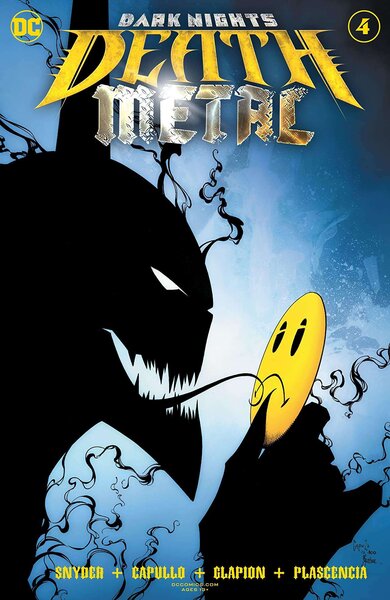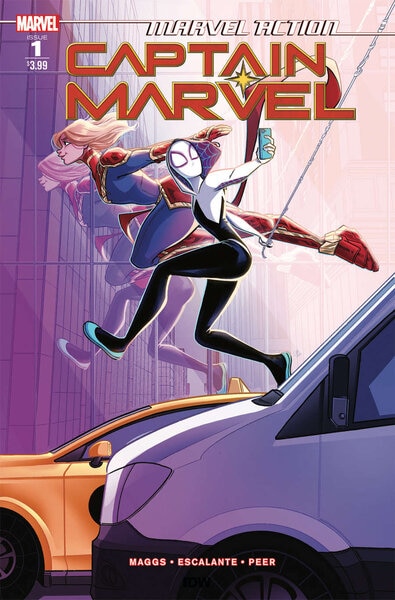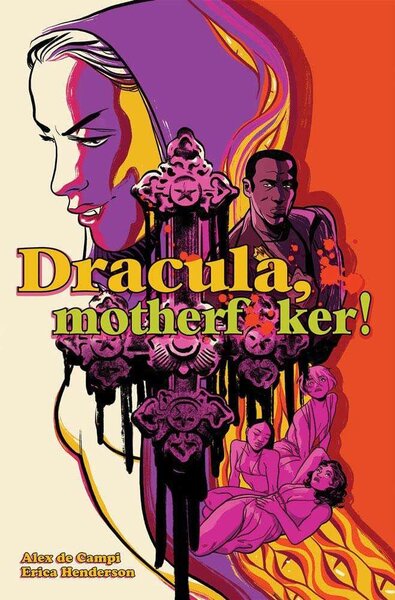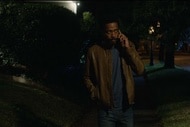Create a free profile to get unlimited access to exclusive videos, sweepstakes, and more!
Comics Wire: Marvel goes all-in on Symbiotes, and we dig into Death Metal. Plus Dracula, Dead Dudes & more
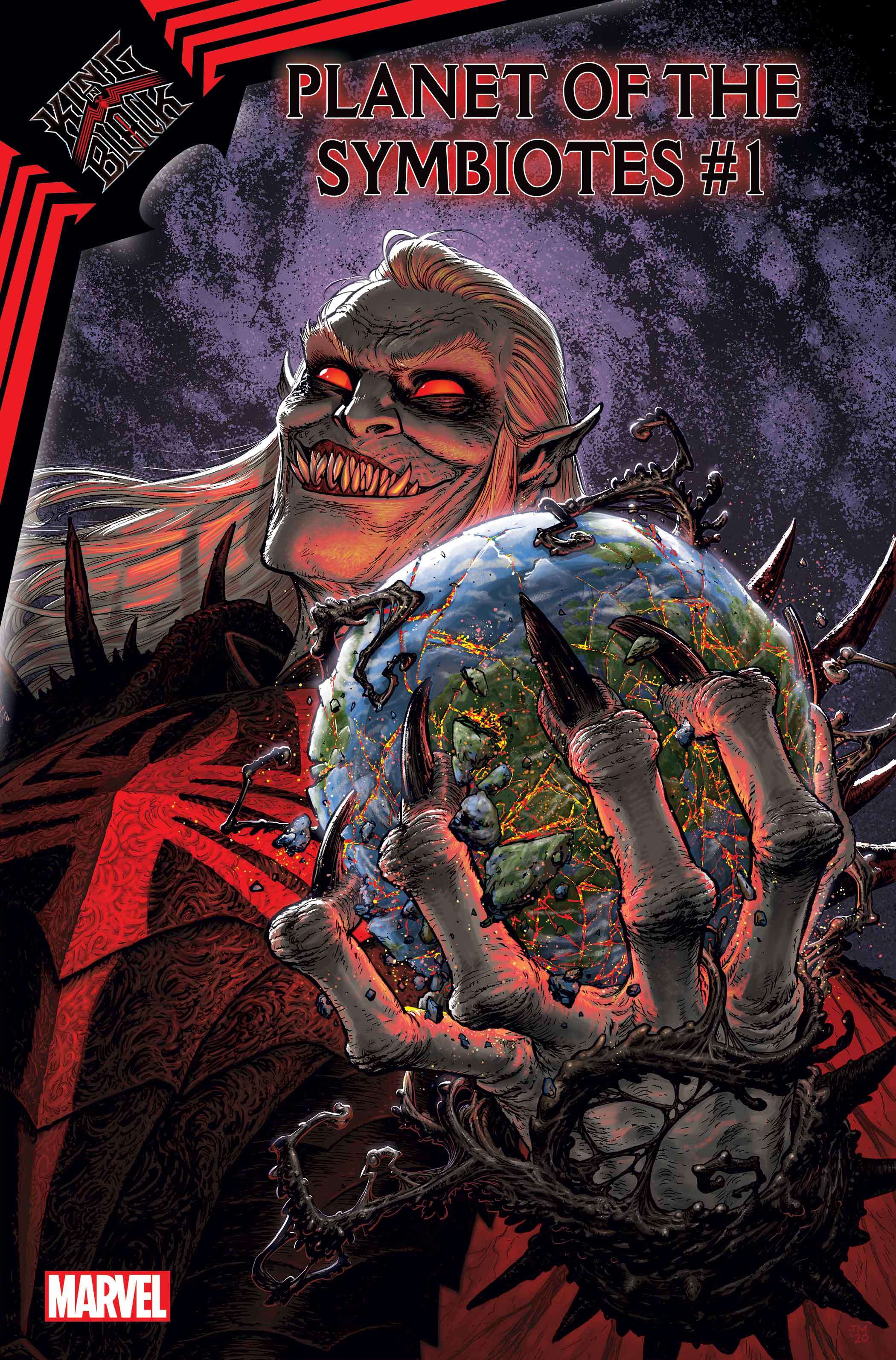
Welcome to Comics Wire, SYFY WIRE's weekly comics column that gets at the pulse of what's going on in comics right now. We've got what you need to know about huge crossovers, real-life issues facing the industry, cool first looks, the week's hot new comics, and everything in between.
Venom's always been a popular character. Look at the t-shirts on display at any comics convention, the success of his first solo feature film, or... well, the entirety of the 1990s, and you'll see that the symbiotic antihero has long been a character that Marvel Comics readers will keep coming back to, even if the host he's attached to changes. That said, if you'd told me five years ago that Venom would be not just popular, but a potential cornerstone for the future of the whole Marvel Universe, I might've given you a funny look.
Yet that's exactly what's been happening in the Donny Cates/Ryan Stegman era of Venom stories, and Marvel is proving it this winter by going absolutely all-in on King in Black, Cates and Stegman's massive crossover event building on everything they've been doing since their Venom run began. The event proper will follow Knull, the Symbiote god, as he comes to Earth with an army at his back seeking to grow his host, but this doesn't stop at a miniseries event book, or even a few Venom and Venom-adjacent crossovers. No, Marvel's going big with this, as a few new miniseries announcements proved over the past couple of days.
We already knew that the King in Black miniseries was set to launch this December, that it would have major implications for the Marvel Universe as a whole, and that it would feature tie-in books like King in Black: Namor, but Marvel just announced a whole host of other tie-ins that are along for this wild ride. SYFY WIRE got an exclusive look this week at the upcoming Thunderbolts tie-in book, and this week so far Marvel has also announced a Planet of the Symbiotes book that will feature short stories set amid the King in Black event, a Black Knight book from Simon Spurrier and Jesus Saiz, and a truly bonkers-sounding book called Gwenom vs. Carnage from Seanan McGuire and Flaviano.
That's a lot to take in, and we almost certainly haven't seen the last of it. King in Black was always going to be big, because as any Donny Cates fan will tell you, that's just how his superhero books work, but as Marvel continues to unfurl the plans for the full scope of this thing, it's very clear that Cates and Stegman's combination of psychological thriller and far-reaching interstellar myth-building in Venom has paid off in a big way that Marvel's ready to push like never before. It'll be very interesting to see what the Marvel Universe looks like on the other side of this thing.
King in Black begins in December.
Death Metal and the emotional crises of superhero fandom
When Dark Nights: Death Metal launched a few months back, I wrote in this very column about how excited I was by Scott Snyder and Greg Capullo's opening gambit in the series, and their "everything matters" philosophy when it came to in-story discussions of the events of the DC Universe. Rather than serving as yet another radical reinvention of the DCU, Death Metal seemed to be setting out to instead become a kind of inclusive meta-epic where every single major concept ever trotted out in DC Comics, no matter how bonkers, could be celebrated in some way.
That approach was, it seemed at the start, baked right into the plot, as Wonder Woman and her compatriots set out to track down enough "Crisis Energy" from the major events in their multiverse to harness it and take down Perpetua, even as The Batman Who Laughs forged ahead with his own plans to remake the multiverse behind Perpetua's back.
Which brings us to Dark Knights: Death Metal #4, where that concept has really slammed into place in a powerful, metatextually satisfying way.
**Spoilers for Death Metal #1-3 and assorted tie-ins beyond this point.**
As previous issues revealed, one of the obstacles our heroes have to face going forward is Superboy-Prime, the villain of the Infinite Crisis event who's been imprisoned in the Source Wall since then and now has a role to play in the current struggles of DC's Heroes. Superboy-Prime, you may remember, was one of the heroes who went off to live in a pocket dimension at the end of Crisis on Infinite Earths, only to return in Infinite Crisis as a mad villain hellbent on creating a "perfect Earth" based on his own conceptions of everything that had gone wrong since he left. Now he's back in the pages of Death Metal, and though he's been away for some time and his emotional maturity has perhaps evolved somewhat, he's still got the same idea. He still wants one place that feels like the world he truly wants above all others, no matter what that costs.
Basically, as has been pointed out many times by Infinite Crisis readers, Superboy-Prime is a fanboy who's angry at the way comics have changed since he was a kid.
By placing him in the midst of Death-Metal as a slightly older guy with a new version of an old problem, Scott Snyder and Greg Capullo run the risk of simply re-hashing the thematic core of Infinite Crisis all over again, rather than building it into something new. As Death Metal #4 moves on, though, it's clear that Superboy-Prime's quest for the perfect version of DC Comics is not just in opposition to Wonder Woman's goals, but fundamentally incompatible with the kind of fight she's fighting. Since it launched, the "everything matters" core of Death Metal has grown to mean many things as DC's various heroes move through a dark landscape, searching for keys to bring the light back, but what it seems to still mean more than anything is that there really is room for everyone in this big, strange tent Snyder and Capullo are working with.
Superboy-Prime still reads like a bitter, entitled fanboy who just wants to read the comics that are specifically for him, but the larger point is not that he's wrong for wanting those kinds of comics. It's that the DC Universe can contain all of it if we're just willing to let it, and somehow expressing that all in the fictional confines of one crossover event is proving to be a truly dazzling narrative achievement. It's not just a reinvention but re-absorption, and that's absolutely wild. I have no idea how or if Snyder and Capullo will stick this landing, but they're taking big swings and they're not slowing down until the final bell.
News roundup: Beast Wars returns, a new Tom Taylor project, Eternals postponed, and more.
Now that we've looked at a couple of big chunks of superhero development, let's take a peek at a few other news items before we head into new comics.
There wasn't as much news out of New York Comic Con this year as we might have had in other years, but there were still some fun new comics announcements last weekend, including two big ones from IDW. Next year, the publisher is launching a new era for its Marvel Action series of young readers superhero adventures with a new Captain Marvel book written by Sam Maggs with art by Isabel Escalante and Sweeney Boo, and it's also adding to its already impressive Transformers roster with a new comic from writer Erik Burnham and artist Josh Burcham celebrating the 25th anniversary of Beast Wars.
Legendary publisher Heavy Metal is booming lately, and they proved it yet again this week by announcing a new creator-owned imprint, Magma Comix, overseen by Denton Tipton with the aim of delivering genre stories with "unbridled creativity." Magma launches next year with the sci-fi thriller Amber Blake, the horror series The Modern Frankenstein, and the dark fantasy Chasing the Dragon, all of which are well worth a look.
Tom Taylor is one of those writers who can make me lean forward and listen when they've got a concept that remixes something familiar. We've seen it in the way he writer superhero comics, and the way his conspiracy thriller book Seven Secrets expands on certain familiar concepts in old ways. Now, Taylor and artist Jon Sommariva are taking that ability to twist the familiar into something new and aiming it at the Peter Pan legend. As The Hollywood Reporter wrote last week, Taylor and Sommariva have teamed up on Neverlanders, a story of the last Lost Boy and the adventures of a new gang of runaways. The young adult graphic novel is set to arrive in the summer of 2022, so we have a while to wait, but I'm eager to hear more about this as soon as possible.
Comics This Week: Marneus Calgar, a DC Halloween special, a new take on Dracula, and more!
That's the news. Now let's take a look at some of the comics I got excited about this week.
Dracula, Motherf**ker!: I love it when a Dracula story embraces the fundamental mutability of the character as a piece of popular culture and then just decides to go for it with a clear, transformative vision of what the ultimate vampire prince can be, which is why I was thrilled to open Dracula, Motherf**ker and find from the very first page that writer Alex de Campi and artist Erica Henderson were very much doing their own thing, and their own thing is wonderful.
First of all... I mean, it's a hell of a title. It's the kind of title that lets you know this is the kind of thing Hammer might have gotten around to doing eventually if they'd kept cranking out Dracula flicks beyond Dracula 1972 A.D., and for extra bonus points, the book lays in a 1970s setting and vibe to chart the course of its tale. Set in Los Angeles in 1974, the story follows a crime scene photographer chasing lurid images, and the cash they bring, across the City of Angels when he just happens to run into some vampires. From this point on, I have no doubt that De Campi could have plowed straight ahead with yet another remix of the exact structure of Bram Stoker's novel, and even thrown in a version of Dracula who looks and acts like a neo-noir character straight out of a Robert Altman movie.
She's got those gifts, and it would have been great, but what makes this version of the Dracula legend stand out is De Campi's willingness to go in a different direction. Her script, witty and haunting, dreamlike and brutal, instead places the focus on Dracula's legendary brides, and the result is a book that has as much to say about vampire fiction as it does about the treatment of women in the films of the New Hollywood era, with equal energy and brilliance given to both.
Then there's Henderson's art. We know she's great, because we've seen it on things like Unbeatable Squirrel Girl and Jughead, but here she seems to use De Campi's script as a propellant to get to a whole new gear. The art — featuring a terrifying, mesmerizing, primal redesign for the title character — is both recognizably Henderson's and unlike anything else she's done in comics, sexy and scary and playful all at once. De Campi's script lays the foundation for Henderson to absolutely take flight in these pages, and the result is a book I wish I could have 100 more pages of. It's a wickedly brilliant new addition to the horror comics canon, perfect for a Halloween night.
Warhammer 40,000: Marneus Calgar #1: One way to tell if a licensed comic really works or not is to give it to someone with no foreknowledge of the franchise in question, and see if they can not only follow it, but enjoy it. Sure, the seasoned fans can comb through and glean deeper meaning and find Easter eggs, but just like a good standalone adventure in a superhero film franchise, a good comic based on a licensed piece of IP should be able to pick up a newbie and carry them right along into the story. In the case of Marneus Calgar, the first miniseries from Marvel's Warhammer 40,000 comics, that makes me a perfect test subject. I know nothing about the Warhammer world, but I do know that I'm a Kieron Gillen fan, so I wanted to see if the thing would still work.
Well, I'm happy to say that it not only worked, but it worked with an energy that actually has me very eager to learn more about this wild universe of endless warfare and the beings who populate it. Gillen, who was a games journalist before he came to comics full-time, has always been a master of universe construction, both in terms of the level of detail he's willing to apply to his scripting and in terms of the elegance with which he executes it, but I say that having only ever read things he's created whole cloth or things that existed in a place I was already familiar with, like the Marvel Universe.
In applying that elegant worldbuilding eye to this story of a legendary Space Marine and how he came to be, Gillen had not to just lay out the universe for us in comics form, but do it in a way that focused in on one key character. And not only that, but one key character who's meant to be one of the key figures in this fictional universe, and he has to make us care about all of it in just a couple dozen pages. Somehow, someway, he pulls it off with a script that's just the right amount of bombastic, just the right amount of funny, and just the right amount of surprisingly emotional. Jacen Burrows' gorgeous art does the rest, with a style that both lays down the epic scope of the Warhammer world and never loses sight of the fact that is all supposed to be fun. I'm hooked.
Dead Dudes: Christopher Sebela is a writer who knows how to launch a high-concept, something I've known since his excellent High Crimes dropped back in 2013. The trick, of course, is not just knowing where the high-concept goes after the initial hook, but knowing where it stops, where it pivots, and where the emotional core goes amid all the fun genre stuff. Thankfully, Sebela seems to know how to do all of those things too, and Dead Dudes is a perfect example of that.
Sebela's collaboration with artist Ben Sears begins with a very recognizable and very funny conceptual hook: What if some of those guys who make a living going into haunted houses with night vision cameras and shouted at phantoms actually not only found ghosts, but became ghosts themselves? It's there that Dead Dudes launches its adventure in the midst of a haunted prison, and while the setup is both clever and satisfying entertaining, it's where Sebela, Sears, and company take the story next that's really impressive.
Sebela's script is, of course, steeped in the comedy of his concept, from frequent use of bleeps in the lettering to note just how much dudes on ghost shows tend to curse to the general madness of the moments just after someone realizes that they've suddenly got ghost powers. But what makes Dead Dudes special is the way it morphs from that into something that's part Ghostbusters, part The Good Place, and part every show about ghost hunting you've ever seen on the Travel Channel. Through a combination of pitch-perfect scripting and Sears' cheerfully impish art, Dead Dudes becomes a very special story about a group of guys who decide that they're not going to give up, even in death.
Commanders In Crisis #1: Steve Orlando is one of those writers with such a clear, earnest grasp on the very idea of what superheroes can do that his stories never have to take the time to establish that he gets it. He just gets it, and that leaves him all the room in the world to branch out into concepts that take superhero fiction in wild, often jaw-droppingly fun new directions. Commanders in Crisis, written by Orlando with art by Davide Tinto, is that kind of book, and the result is one of the best new superhero series of the year.
The commanders of the title are five heroes, each with their own vivid and dynamic set of high-concept powers, who form a superteam protecting the Earth at a very precarious time. The exact nature of that precariousness is better left until you read the final pages of the first issue, but when we first meet them our heroes are investigating a rather unique murder. The victim, in this case, is not just an important person, but the literal embodiment of an idea. Compassion itself is dead, and it's up to our heroes to get to the bottom of why and how.
That, right off the bat, is an absolutely wild idea to launch a comic with. That's the kind of idea that even Grant Morrison might look at twice before diving in, and that's on top of all the superhero conventions Orlando and Tinto are playing with here, some of which I'm not even telling you about because, again, you just need to read it. What makes this truly bonkers stew of superhero mythmaking work is the sense of both tremendous enthusiasm and tremendous confidence running through the whole piece. Tinto's art lends a classic superhero action sensibility to the whole thing, but with an added flair that makes Orlando's high-concept power sets and character dynamics work absolutely seamlessly.
The art, like the script, is both incredibly dense with meaning and incredibly easy to absorb, so much that the book flies by and leaves you wanting to read it all over again not because you didn't get it, but because you're eager to see all the stuff you missed. This is a wild, thrilling new superhero ride that feels like the start of something truly inventive and fresh.
DC: The Doomed and the Damned: I love a superhero holiday anthology. If I had my way, both of the Big Two publishers would be pumping 80-page Giants out for Halloween, Christmas, Easter, Hanukkah, and Toyotathon too. Yes, they're fun when they stick to the spirit of the season in which they're published, but if they're done right they're also a showcase for the often unexplored versatility of the characters who populate these universes, especially if you take things in a fun team-up direction. In that respect, DC's The Doomed and the Damned Halloween anthology is an absolute blast.
Like The Brave and The Bold before it, The Doomed and the Damned is a series of wild team-up adventures in which various DC heroes and villains join forces to battle monsters, ghosts, demons, and all manner of other things that go bump in the night. None of the stories outstay their welcome, none of them are trying too hard to be the "important" one or the continuity redefining one or the deconstructionist one. It's just great creators riffing on superheroes with monsters, and the result is constant entertainment.
I can't say I dislike any story in this batch, but I was especially wild about the Batman story by Saladin Ahmed and Leanardo Manco, the Wonder Woman/Raven team-up by Amanda Deibert and Daniel Sampere, and the Aquaman/Frankenstein team-up (yes, they really did that) by Brandon Thomas and Baldemar Rivas. If you're looking for a comic that lets you take a spooky hour away from the world this October, this'll do the trick.
And that's it for Comics Wire this week. Until next time, remember what John Custer told his son Jesse in the pages of Preacher:
"You gotta be one of the good guys, son: 'Cause there's way too many of the bad."

